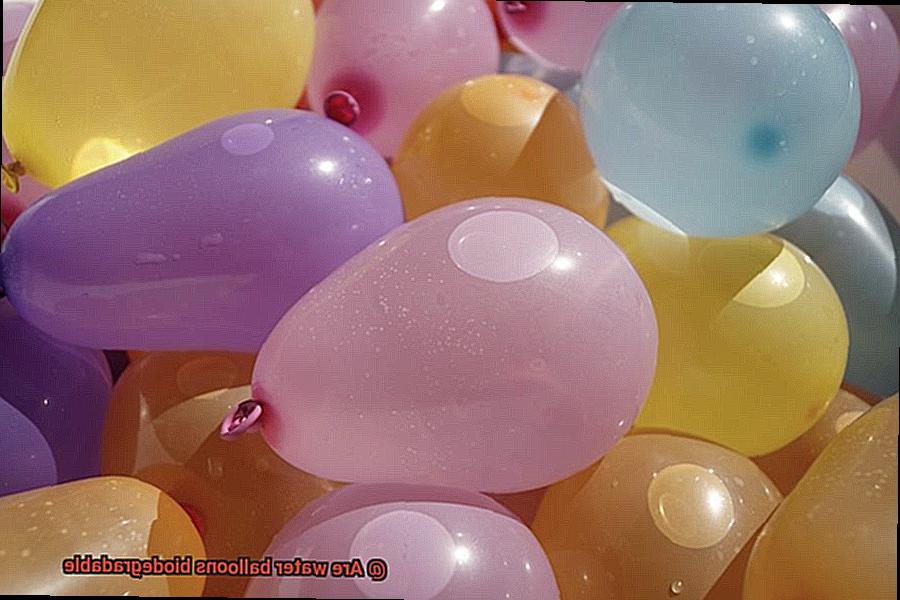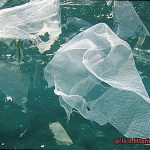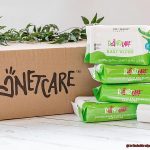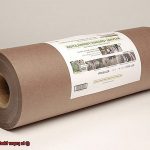Do you love the thrill of a water balloon fight on a hot summer day? Or maybe you use them for creative decorations or to ease stress. But have you ever stopped to think about what happens to those colorful balloons after they’re thrown?
As we become increasingly aware of our environmental impact, it’s crucial to consider the products we use and how they affect nature. While water balloons may seem harmless, improper disposal can lead to severe consequences for the environment.
In this blog post, we’ll explore whether water balloons are biodegradable. We’ll take a closer look at the materials commonly used in their production, how long they take to decompose, and the environmental impact they can have if not disposed of correctly.
By the end of this article, you’ll gain insight into whether or not using water balloons is environmentally friendly. And if so, we’ll provide tips on how to use them responsibly while minimizing their impact on nature. So let’s jump in and learn more.
What Are Water Balloons?
Contents
Water balloons are the perfect solution for both. These small, elastic rubber balloons are filled with water and are ideal for playing games or engaging in water fights with friends and family.
Water balloons come in various sizes and colors, and are often sold in packs for ease of use. They’re a popular choice for special occasions such as birthday parties or other celebrations, particularly during the summer months when outdoor activities are in full swing.
While latex water balloons are often marketed as biodegradable, it’s important to note that they still require specific conditions to decompose fully, and can take up to six months to degrade in the environment. In contrast, plastic water balloons are entirely synthetic and do not biodegrade at all.
Improperly discarded water balloons can end up in our oceans and waterways, polluting the environment and harming wildlife.
It’s therefore essential to consider the environmental impact of using traditional latex or plastic water balloons, and explore eco-friendly alternatives made from biodegradable materials such as cornstarch or bamboo fiber.
These options break down more quickly in the environment, and have a reduced environmental impact compared to traditional water balloons.
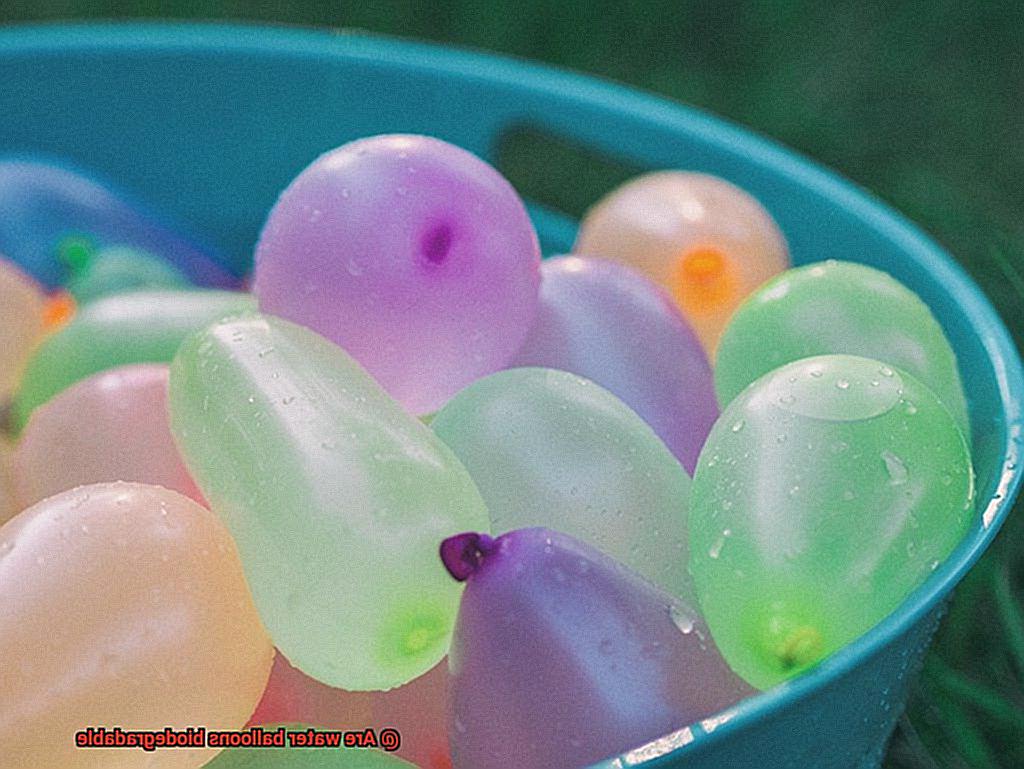
Are Water Balloons Biodegradable?
Are water balloons biodegradable? Unfortunately, most of them are not, and here’s why.
Water balloons are typically made from latex, a natural rubber that can biodegrade over time. However, the problem lies in the chemicals added during production to make them stronger and stretchier. These chemicals can prevent the latex from breaking down naturally, rendering most water balloons non-biodegradable.
The impact of non-biodegradable water balloons on the environment is significant. When left in nature, they can cause harm to wildlife by being mistaken as food or getting tangled in branches and power lines. This highlights the importance of finding more eco-friendly alternatives.
Thankfully, some companies have begun manufacturing biodegradable water balloons from materials like cornstarch or natural rubber, which break down naturally and don’t harm the environment. When shopping for water balloons, it’s crucial to check packaging or do research to ensure you’re purchasing biodegradable options.
In conclusion, while most water balloons aren’t biodegradable due to added chemicals during production, environmentally friendly options are available. By choosing biodegradable options and properly disposing of non-biodegradable ones, we can enjoy our water balloon fights while minimizing our impact on the planet.
Latex Water Balloons and Their Environmental Impact
While latex, the natural rubber used to make water balloons, is biodegradable and can decompose over time, the additives and chemicals added during production can completely negate this benefit. Plasticizers like phthalates and bisphenol A (BPA) are commonly used to make water balloons more durable and colorful, but they are notorious for being harmful to both human health and the environment.
Improper disposal of these balloons can lead to contamination of our soil and water sources, which can have long-lasting negative effects on our ecosystems. And as if that’s not enough, as these balloons break down, they can become a serious hazard for wildlife. Animals may mistake them for food or become entangled in them, leading to injury or even death.
But don’t worry, there are ways to minimize the environmental impact of latex water balloons. First and foremost, choose eco-friendly options made from cornstarch or natural rubber that do not contain harmful additives. When using non-biodegradable options, make sure to dispose of them properly by throwing them in the trash instead of leaving them on the ground.
Let’s keep the fun in water balloon fights while also being mindful of our planet’s health. By choosing eco-friendly options and properly disposing of non-biodegradable ones, we can all do our part in preserving our environment for future generations.
Plastic Water Balloons and Their Environmental Impact
While they may seem like harmless fun, their impact on our environment is far from it. As an expert on this topic, I can tell you that plastic water balloons pose a significant threat to our ecosystems.
Most plastic water balloons are made from non-biodegradable materials such as PVC or LDPE, which take hundreds of years to decompose. The harmful chemicals released during this process pollute the soil and air, putting both animals and humans at risk.
But it’s not just the land that suffers – marine life is also endangered when these balloons end up in oceans or other bodies of water. Marine animals can mistake them for food, causing them harm or even death. With plastic waste being one of the biggest threats to marine life today, it’s crucial to reduce our use of single-use plastics such as water balloons.
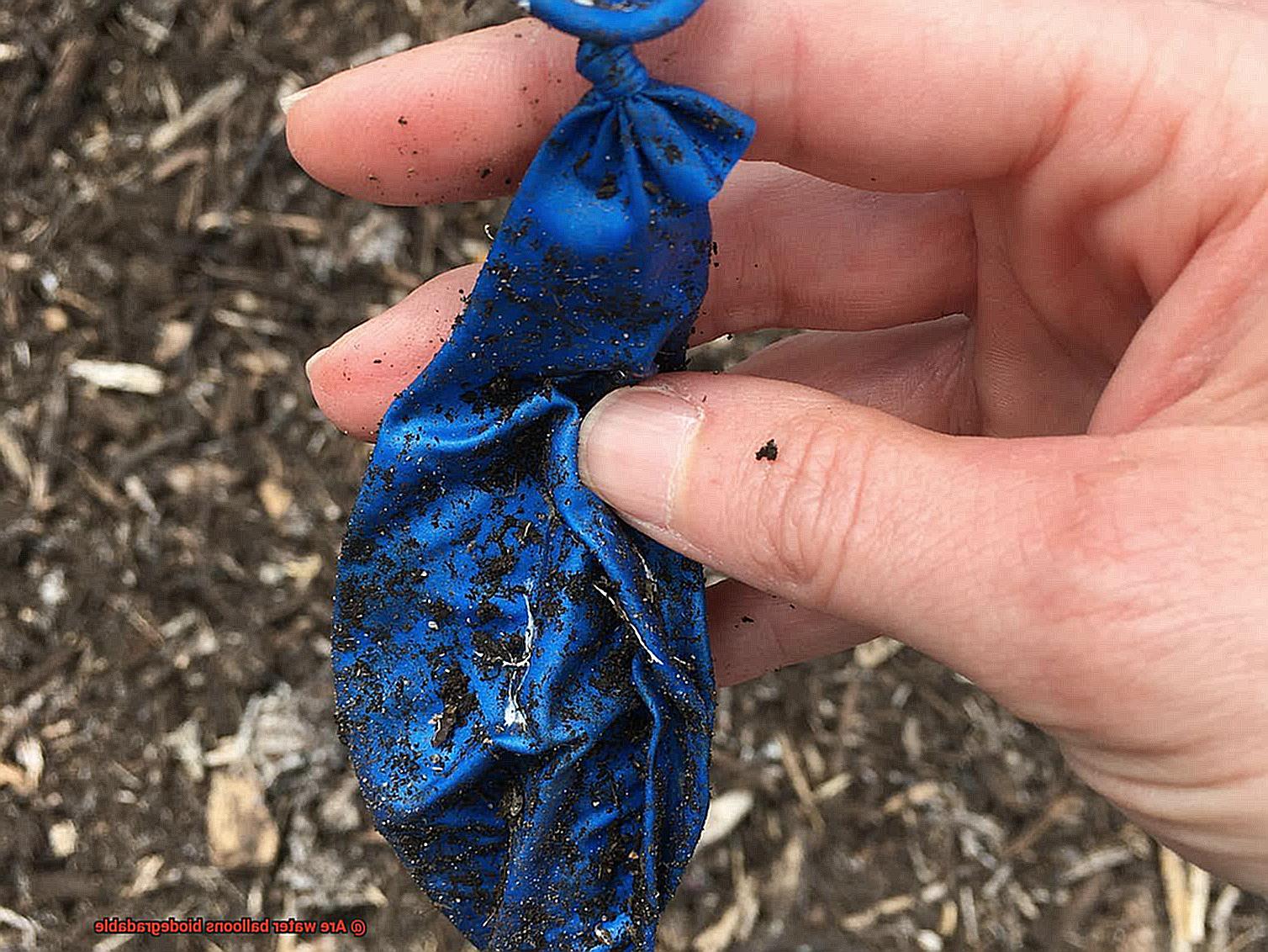
However, there is hope. Biodegradable alternatives to plastic water balloons are available that are environmentally friendly and safe for all.
Plant-based water balloons made from natural materials such as cornstarch or tapioca starch are becoming more widely available. These types of balloons will decompose within a few months, leaving no harmful residue behind.
Eco-Friendly Alternatives to Traditional Water Balloons
These seemingly innocent balloons can harm wildlife and contribute to pollution by taking years to decompose. Luckily, there are eco-friendly alternatives that are both fun and sustainable.
Reusable water balloons made of fabric or silicone are an excellent alternative to traditional water balloons. Not only do they come in a variety of colors and designs, but they can also be filled with water and used again and again. By choosing reusable options instead of single-use plastic, we can reduce waste and save money in the long run.
Another great option is biodegradable water balloons made from natural materials like cornstarch or rice flour. These balloons break down over time, reducing their impact on the environment. However, it’s important to remember that even biodegradable balloons should not be left outside for extended periods of time as they can still harm wildlife if ingested.
For a completely waste-free option, consider games and activities that require nothing more than water and buckets. Sponge relays and water tag are just a few examples of fun activities that provide all the excitement of water balloons without any negative environmental impact.
Conclusion
In conclusion, it’s important to be mindful of the environmental impact of water balloons, a popular summer activity. Traditional latex and plastic water balloons are not biodegradable and can take months or even hundreds of years to decompose. This can cause pollution in our soil, air, and water sources, putting wildlife and ecosystems at risk.
Luckily, there are eco-friendly options available that are both fun and sustainable. Biodegradable water balloons made from natural materials like cornstarch or rice flour break down over time, reducing their impact on the environment. Reusable fabric or silicone water balloons provide a waste-free option that can be used again and again.
To preserve our planet for future generations while still enjoying the excitement of a good old-fashioned water balloon fight, it’s crucial to choose these environmentally friendly options when purchasing water balloons. Additionally, we should properly dispose of non-biodegradable ones by throwing them in the trash instead of leaving them on the ground.
Let’s have fun responsibly this summer by choosing eco-friendly alternatives to traditional water balloons.
